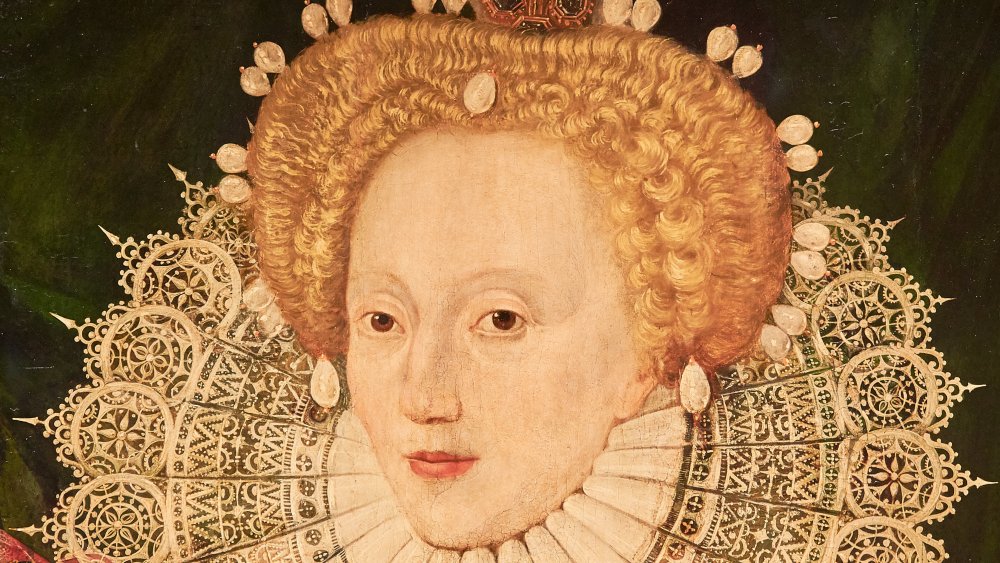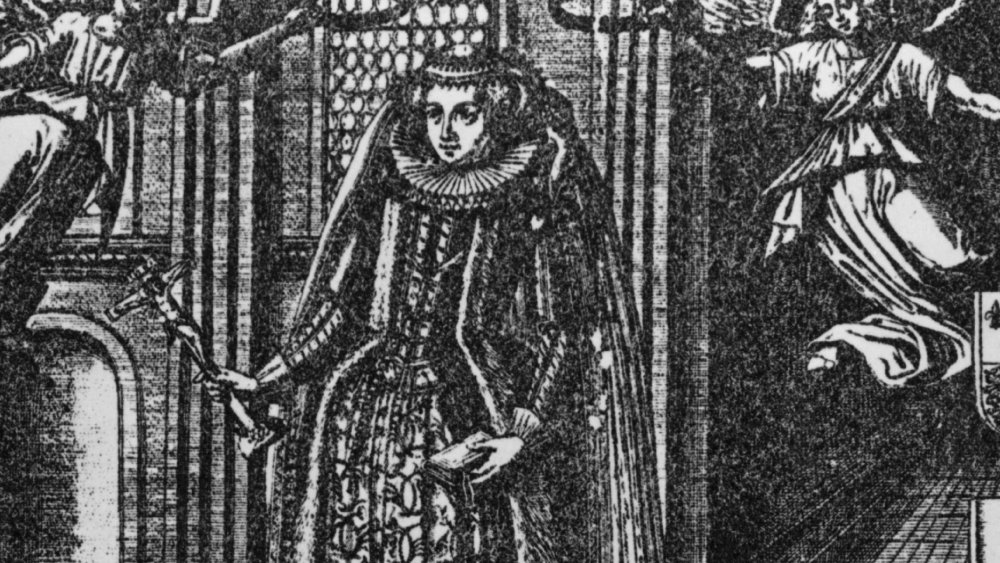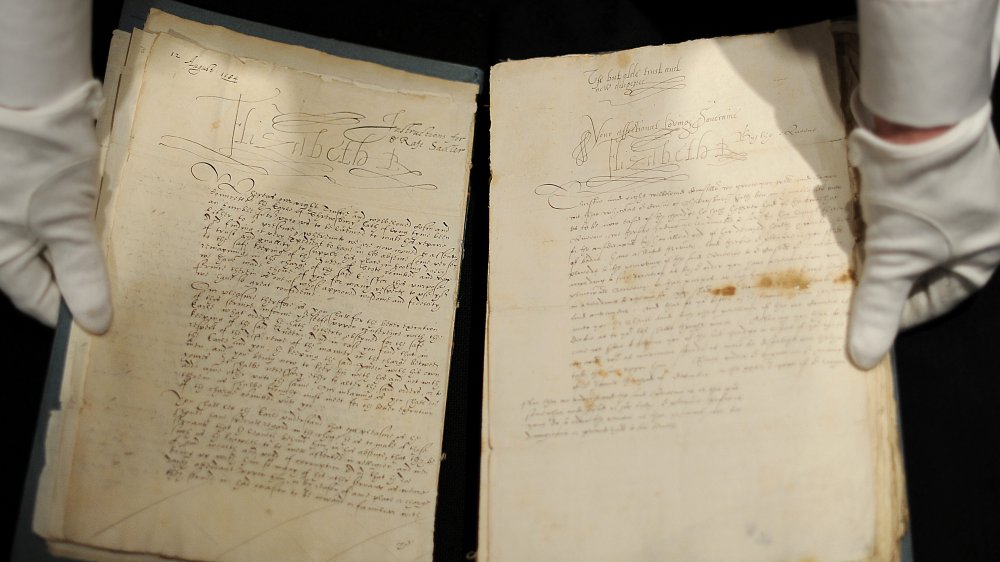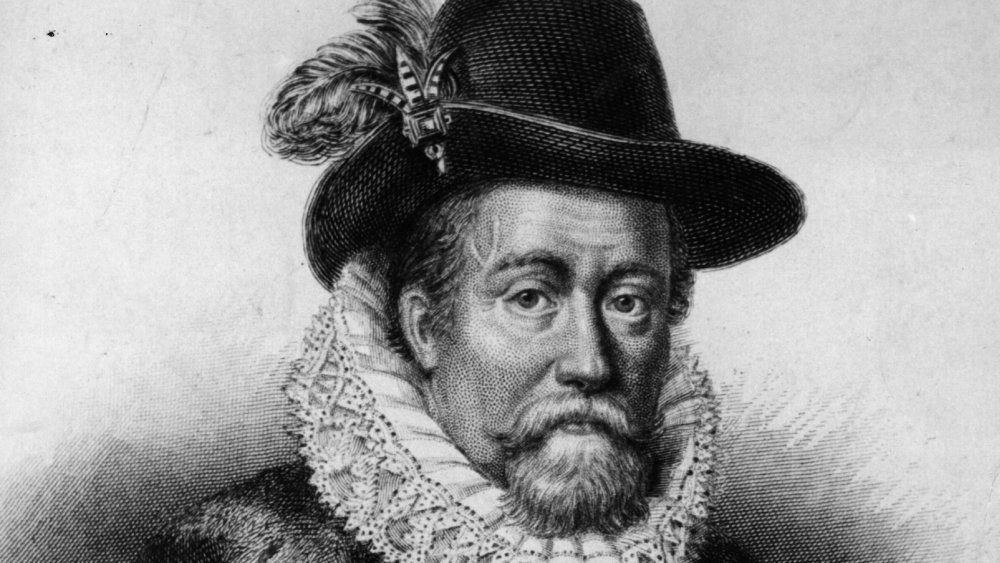The Truth About Elizabeth I's Relationship With Mary, Queen Of Scots
Mary, Queen of Scots and Elizabeth I of England are forever bound in history — especially because the Queen of England ordered her rival's death. What makes their relationship intriguing is that they never even met.
According to History, Mary and Elizabeth were first cousins, though they clearly weren't the type to have family get-togethers. The two queens had vastly different childhoods. Elizabeth grew up isolated from her family after her father, Henry VIII, had her mother Anne Boleyn executed for alleged adultery. She lived in her own small household away from court and was declared illegitimate, according to the UK's Royal Family website. For the time being, she was stripped of her right to inherit the throne. However, Elizabeth did receive education normally reserved for male heirs, The Encyclopedia Britannica says, and was hailed by tutors for her intelligence.
"Her mind has no womanly weakness," her tutor Roger Ascham said, according to The Encyclopedia Britannica. "Her perseverance is equal to that of a man, and her memory long keeps what it quickly picks up."
Mary's childhood was different
Mary, on the other hand, lived in the lap of luxury.
Six days after her birth, her father James V died and she became the queen of Scotland, according to The Encyclopedia Britannica. At the age of five, her mother sent her to live with French relatives who happened to be close to the French king and queen. Since she was already a queen, Mary even walked ahead of the French princesses. As a bonus, she was also engaged to the king's son.
Mary was given education, money and was adored by many in the French court. By all accounts, she had a lavish wardrobe, and enjoyed the finer elements of court life during her 13 years spent in France. In fact, by the time she went returned to her native Scotland, she was more "French" in culture than Scottish. Her return would ultimately also lead to her demise.
Warm letters gave way to soured relations
Elizabeth finally succeeded the throne after years of family turmoil. Her sister, also named Mary (there wasn't much originality in naming princesses then) was an unpopular queen and died without an heir. Elizabeth was next in line by default.
Elizabeth was pressured to name an heir since she was famously unmarried. The next person in line for the throne? Her cousin Mary, Queen of Scots.
Despite recent movies portraying a meeting between the two, Smithsonian Magazine says the cousins never laid eyes on each other. But they did write letters. These letters were warm and the two queens even floated the idea of actually meeting. Elizabeth toyed with the idea of naming Mary her heir but she was troubled over the power her cousin could have over her reign.
Things soon changed when Mary married Henry Stuart, Lord Darnley. Elizabeth was angry — her cousin had not asked for permission and she felt the marriage was a threat to her reign in England.
The tragic end of it all
Mary's husband Lord Darnley was assassinated and she married the man accused of his murder. This proved unpopular and Mary abdicated the Scottish throne in 1567 to her son from her first marriage.
Mary fled Scotland and sought asylum in England, and the possibility of Elizabeth's support in helping to take back her crown. Upon arrival, she didn't quite get what she wanted: Elizabeth placed her cousin under house arrest for 18 years. Per Smithsonian, Mary kept writing to Elizabeth, asking her to "put aside the jealousy and mislike" between them, but to no avail.
Mary had become a problem for Elizabeth. At this point, Mary was already the favorite of some powerful Catholic officials in England. Elizabeth was a Protestant, and while she enjoyed considerable popularity, factions were planning to get rid of her. Things came to a head when Mary became embroiled in an assassination attempt on Elizabeth. Not long after, the English queen signed the former Scottish queen's death warrant. Mary, Queen of Scots was beheaded on February 7, 1587.
While Elizabeth I is remembered for a glorious age in English history, her cousin had the last laugh. Still without an heir, Elizabeth died and passed the throne to Mary's son James, the first monarch to rule the joint kingdoms of England and Scotland.



